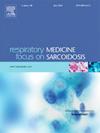亚洲慢性呼吸系统疾病康复项目的特点:范围综述
IF 3.5
3区 医学
Q2 CARDIAC & CARDIOVASCULAR SYSTEMS
引用次数: 0
摘要
在亚洲,慢性呼吸系统疾病(CRD)的发病率正在上升。肺康复(PR)已被证明是一种对慢性呼吸系统疾病患者非常有效的干预措施。虽然肺康复模式在西方国家已经非常成熟,但环境、文化和社会因素可能会影响亚洲如何开展针对慢性呼吸系统疾病患者的康复计划。本综述旨在确定亚洲 CRD 患者康复计划的特点,并确定这些康复计划与最近更新的美国胸科学会 (ATS) PR 指南之间的差异。根据 PRISMA 范围界定综述指南,我们检索了从开始到 2023 年 12 月 13 日的五个数据库:CINAHL、Medline、Embase、Web of Science 和 Health and Medical Collection。共有 137 项研究(n = 19,128)被纳入审查范围。多达 113 项研究(83%)将有氧运动作为康复的一部分,只有 90 项研究(66%)将阻力训练作为康复的一部分。39 项研究包括太极、气功和瑜伽等干预措施。与 2023 年 ATS PR 指南相比,只有 22% 的纳入研究评估了与指南一致的康复计划。运动能力的提高(76%)和生活质量的改善(73%)是最常用来评估项目疗效的结果。研究结果表明,亚洲地区的康复模式差异很大,与其他地区相比,有些康复模式更适合当地情况。我们需要进一步考虑如何平衡康复计划的适应性与干预措施的忠实性。本文章由计算机程序翻译,如有差异,请以英文原文为准。
Characteristics of rehabilitation programs for chronic respiratory diseases in Asia: A scoping review
The rates of chronic respiratory disease (CRD) is rising in Asia. Pulmonary rehabilitation (PR) has been shown to be a highly efficacious intervention for people with CRD. While PR models are well established in Western countries, environmental, cultural and societal factors may influence how rehabilitation programs for people with CRD are conducted in Asia. This review aims to identify the characteristics of rehabilitation programs for people with CRD within Asia and identify differences between these rehabilitation programs to the recently updated American Thoracic Society (ATS) PR guidelines. Utilising the PRISMA scoping review guidelines, five databases– CINAHL, Medline, Embase, Web of Science and Health and Medical Collection were searched from inception until 13th December 2023. A total of 137 studies (n = 19,128) were included in the review. As many as 113 studies (83 %) included aerobic exercises as part of rehabilitation, only 90 studies (66 %) included resistance training. Thirty-nine studies included interventions such as Tai Chi, Qigong and Yoga. Comparing to the 2023 ATS PR guidelines, only 22 % of the included studies evaluated a rehabilitation program that was consistent with the guidelines. Improvement in exercise capacity (76 %) and quality of life (QOL) (73 %) were the most frequent outcomes used to evaluate program efficacy. The results suggest that models of rehabilitation varied greatly within the Asia region, with some more heavily adapted to suit the local context as compared to others. Further consideration on how to balance adaptation of PR with fidelity of the intervention needs to be taken.
求助全文
通过发布文献求助,成功后即可免费获取论文全文。
去求助
来源期刊

Respiratory medicine
医学-呼吸系统
CiteScore
7.50
自引率
0.00%
发文量
199
审稿时长
38 days
期刊介绍:
Respiratory Medicine is an internationally-renowned journal devoted to the rapid publication of clinically-relevant respiratory medicine research. It combines cutting-edge original research with state-of-the-art reviews dealing with all aspects of respiratory diseases and therapeutic interventions. Topics include adult and paediatric medicine, epidemiology, immunology and cell biology, physiology, occupational disorders, and the role of allergens and pollutants.
Respiratory Medicine is increasingly the journal of choice for publication of phased trial work, commenting on effectiveness, dosage and methods of action.
 求助内容:
求助内容: 应助结果提醒方式:
应助结果提醒方式:


